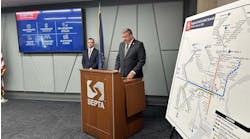Solutions for Electric Vehicle Batteries at End-of-Life Remanufacturing
Growth in vehicle electrification has increased the use of lithium-ion batteries for energy storage, and raised the issue of what to do with post-vehicleapplication batteries. New research recently released by the Mineta National Transit Research Consortium identifies methods to improve the post-vehicle-application use of electric vehicle batteries. The report, Advances in Repurposing and Recycling of Post-Vehicle-Application Lithium-Ion Batteries, conducted by researchers Charles R. Standridge, PhD, Lindsay Corneal, PhD, and Nicholas Baine, PhD identify three possibilities: 1) remanufacturing for intended reuse in vehicles; 2) repurposing for non-vehicle, stationary storage applications; and 3) recycling, extracting the precious metals, chemicals and other byproducts.
This research presents a comprehensive mathematical model to assess remanufacturing, repurposing, and recycling production capacity, as well as new battery production capacity, given any forecast of the number of electric vehicles and plug-in hybrid electric vehicles through the year 2030. Results from the model provide needed capacity for the percent of post-vehicleapplication batteries that are remanufactured.
According to Dr. Standridge, “a full commitment to post-vehicle-application battery remanufacturing will lead to a 25% reduction in demand for new batteries.This is a great achievement keeping in mind the environmental impact of the manufacturing process for new batteries.”
The research team also conducted a demonstration project with Hastings Township, MI to showcase advances in lithium-ion battery repurposing. A prototype energy storage and management system was constructed to support a mobile, off-grid battery recycling system. Another focus concerned the challenges associated with recycling lithium-ion batteries from different manufacturers where the active materials vary in composition. The researchers used acid baths to successfully separate out the active material coatings from batteries of varying chemistries from three different manufacturers.
Tests prove that complete separation of active material is possible through this process at relatively low temperatures, low acid concentrations, and in a short time frame which should improve and reduce the overall cost of recycling in the future. The full report can be downloaded at no charge from the Mineta Transportation Institute web site: http://transweb.sjsu.edu/project/1238.html


